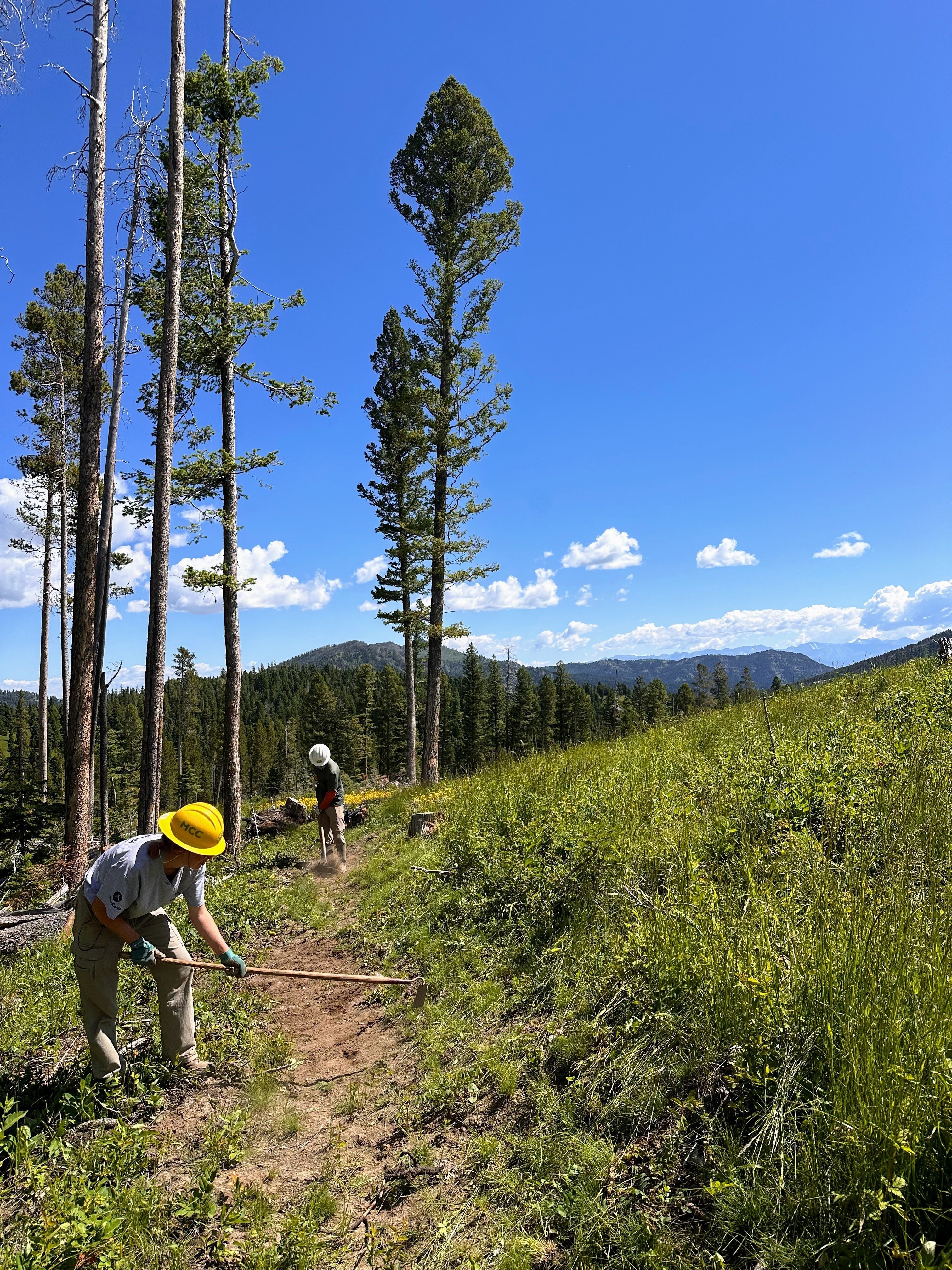
"Our next hitch has been canceled."
Confusion, stress, and curiosity swept our crew's minds when hearing this statement. Less than a week before our hitch we still did not know what our project was going to be. Fortunately, a last-minute fix ended up being one of our best hitches yet.
Collaborating with another crew, we were assigned a project partner with the Custer Gallatin National Forest forestry division. On our first day, we felt the same amount of curiosity as we did when learning the original hitch was canceled. What would our project entail? Would we have enough work to do, given the last-minute assignment? These questions circled our brains as we sat in on the staff's morning meetings, where unknown words about fire science circled the air.
Our first task was to work on digging fire lines within the zones that the Custer Gallatin fire crew was going to do a prescribed burn on in the future. A rough, bumpy dirt road that soon would be a daily path for us led the way to this first fire line. This work was very unfamiliar to us, as our usual assignments are herbicide application and building beaver dam analogs. Contrary to our unfamiliarity, we soon picked up the skills and got to work. We completed 3 different zones of fire lines, totaling 2.51 miles of line. We felt very accomplished and proud of our work while feeling thankful to have been given this wonderful opportunity to work on such a different project than what we are used to. We completed these zones roughly two days ahead of schedule, so the forest service had to give us new tasks.
The first of these tasks was to work on a white pine bark tree orchard. When hearing these words leave our project partner's mouth, we were filled with excitement as silviculture is a common interest among us. Another long, bumpy dirt road led us up to Little Bear Orchard, where Granite Peak slowly revealed itself as we worked our way up the mountain. The views were breathtaking, and the work was even better. The silviculturist explained how the orchard's goal was to breed white pine bark trees that are resistant to blister rust, a fungus. At 8400 feet of elevation, we got to work, weeding around the bark trees and spreading gypsum, a fertilizer, to elevate the pH of the soil for the trees. As we took the bumpy dirt road back to camp, we wondered what our task would be on the last day.
We were unsure if we would be doing more fire lines, or what else the forest service had in store for us. Finally, we reached the office where we were told that we would be seeding burn piles in the Bridger Mountains. Yet another dirt road led us to our task near Fairy Lake. The views just kept getting better each day, and both of our crews felt so thankful to have been given this opportunity on such short notice.
If you had told us at the beginning of the week that dirt roads, fire lines, and burn piles would become our best friends, we would not have believed you. But we are beyond happy that it worked out the way it did. Given our diverse array of tasks, WRT truly does it all. Now we ask ourselves, what's next?!

![[Image Description: Two MCC members taking a brief break; one is sitting on a rock, the other is standing nearby. They are both in their uniforms, looking out at the expansive, mountain view surrounding them.]](https://cdn.firespring.com/images/c3f85e97-43a9-4810-8081-e8e6338173d0.jpeg)



